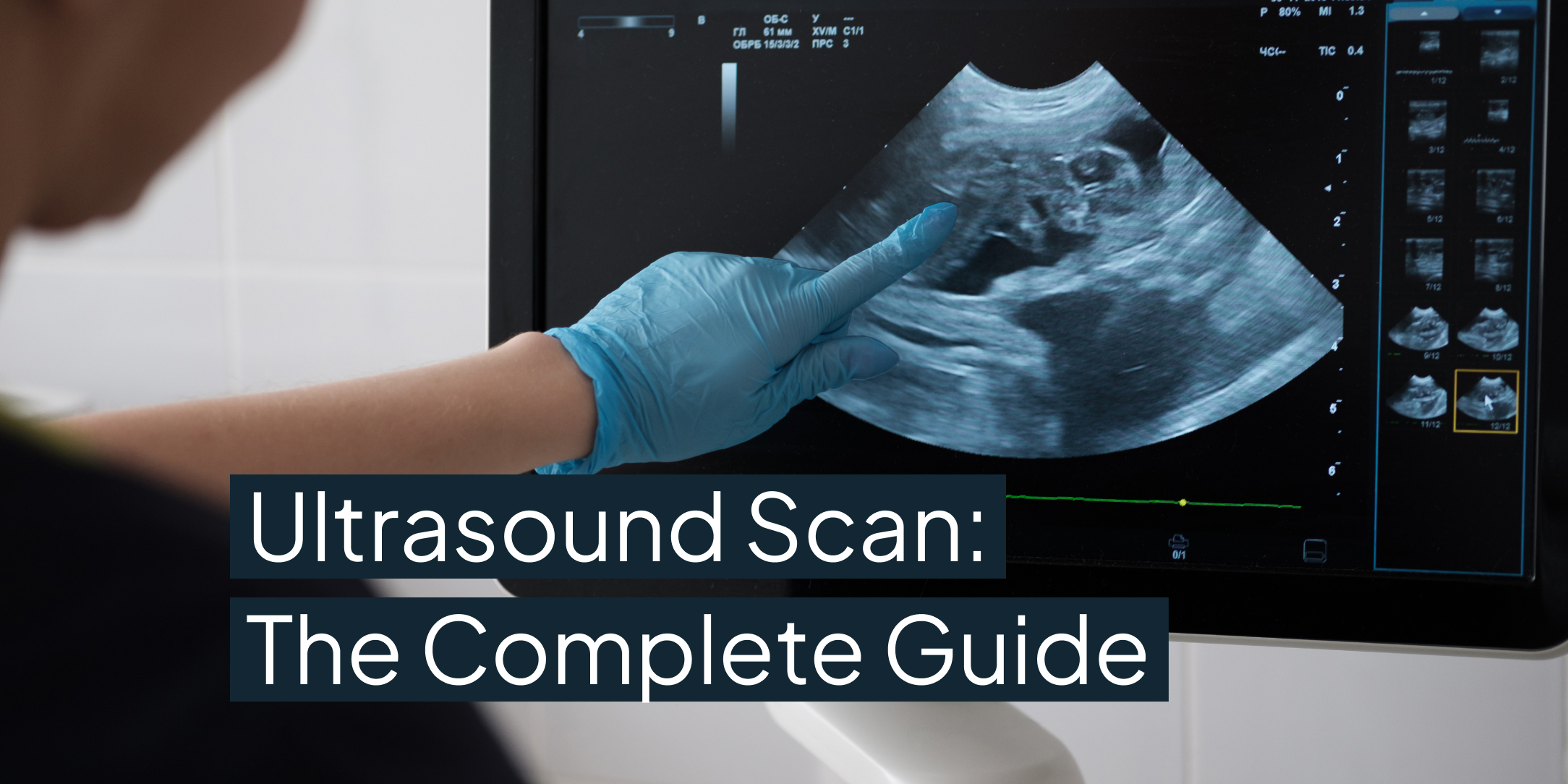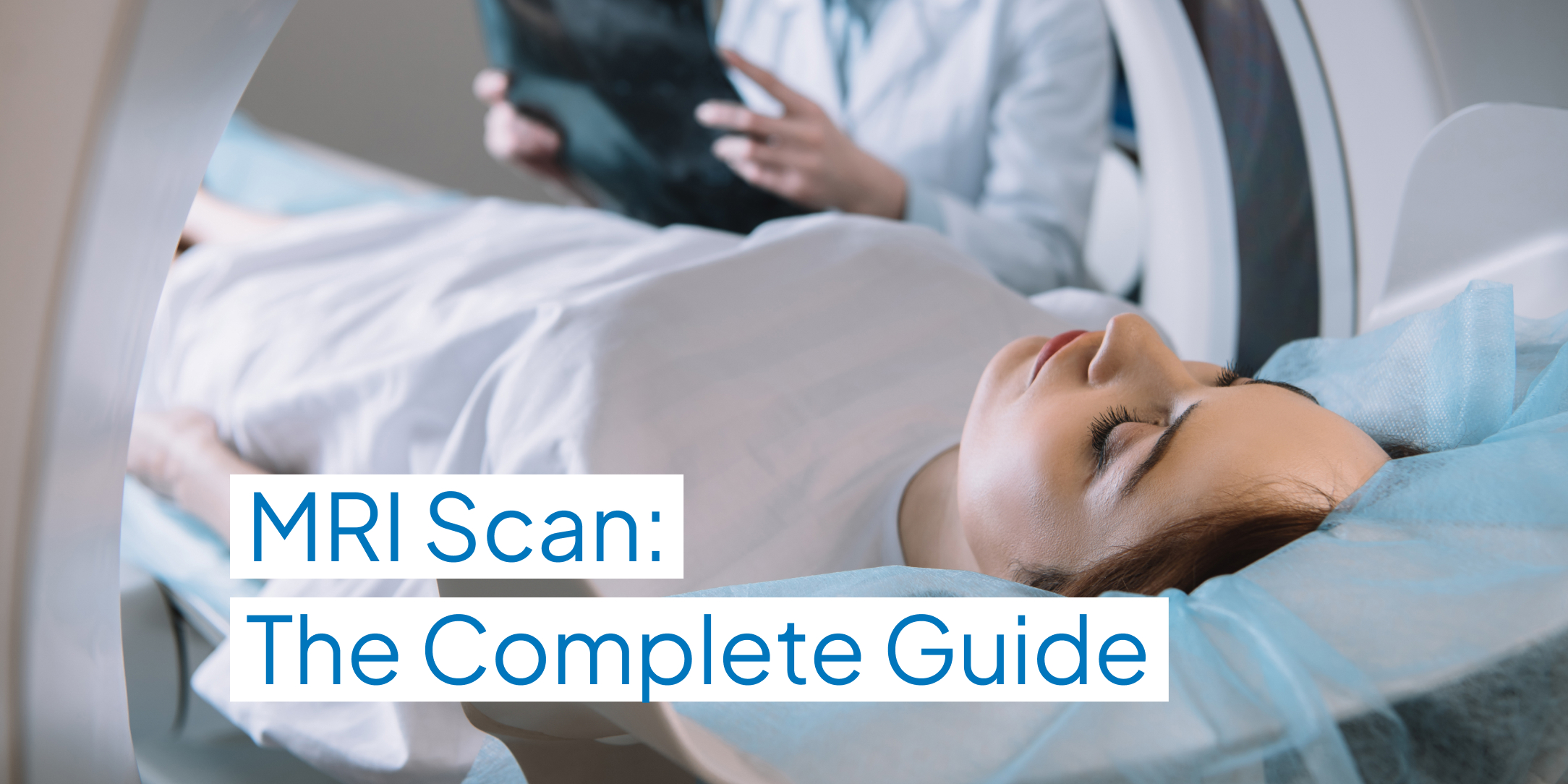X-ray Scan: The Complete Guide (Updated 2025)


GetScannedToday
Intro
X-rays are one of the most common and longest-standing diagnostic tools in medicine. They use low doses of ionising radiation to create images of the inside of the body, particularly bones, joints, and the chest.
The NHS performs millions of X-rays every year. They are often the first-line test for injuries, lung conditions, and joint problems. While most X-rays are available quickly through A&E or GP referral, some patients still face delays for planned outpatient imaging.
As of January 2025, around 7% of diagnostic imaging patients across all modalities waited more than six weeks, with X-rays generally faster than MRI or ultrasound but still subject to local bottlenecks. Privately, X-rays can be arranged within days.
This guide explains what X-rays are, what they can detect, NHS versus private wait times, and how to book one quickly with GetScanned.
What is an X-ray scan?
An X-ray is a type of imaging that uses controlled doses of ionising radiation to capture images of structures inside the body. Dense structures, like bone, absorb more radiation and appear white on the image, while softer tissues appear darker.
Modern digital X-rays are quick, painless, and often provide results within minutes.
What does it show?
X-rays are most effective for visualising bones, lungs, and some abdominal issues.
Common uses of X-ray include:
- Bones and joints:
- Fractures and breaks
- Dislocations
- Arthritis and joint changes
- Bone infections
- Chest:
- Pneumonia
- Lung cancer (initial detection)
- Tuberculosis
- Heart enlargement
- Teeth and jaw (dental X-rays):
- Tooth decay
- Impacted wisdom teeth
- Jaw bone abnormalities
- Abdomen:
- Swallowed objects
- Bowel obstruction
- Kidney stones (sometimes visible)
X-rays are less detailed than CT or MRI but remain a key first-line test.
Who might need one?
An X-ray may be recommended if you:
- Have suffered an injury or suspected fracture.
- Have chest pain, cough, or breathing problems.
- Have suspected arthritis or joint disease.
- Need dental or orthodontic assessment.
- Have suspected lung infection.
On the NHS, X-rays are widely available and often ordered in urgent settings. Privately, X-rays are used for quick reassurance, faster diagnosis, or when NHS appointments are delayed.
How does the scan work?
Step-by-step patient journey:
- Booking: Choose X-ray as your scan type, and then pick a location and date online. Answer a few questions
- Medical referral: Connect with one of our GPs who will discuss your medical history and generate a referral for your scan.
- Preparation: You may need to change into a gown depending on the body part scanned.
- Positioning: The radiographer positions you so the X-ray beam passes through the relevant body part.
- Scanning: The machine briefly emits radiation
- Completion: The process is painless and usually takes only seconds.Aftercare: You can leave straight after the scan.
Preparation & Safety
- Usually, none is required.
- Remove jewellery or metal near the scan area.
Safety considerations:
- X-rays involve ionising radiation, but at very low levels.
- Risks are extremely small, but greater for children and during pregnancy.
- Pregnant patients should only have X-rays if absolutely necessary.
- Protective lead aprons may be used in certain cases.
Results & Next Steps
- X-rays are often reviewed within hours in hospitals or within a few working days privately.
- Reports are prepared by a radiologist and shared with your GP or specialist.
- Possible outcomes:
- Clear scan: No abnormalities.
- Findings: Fractures, infections, or disease requiring treatment.
- Incidental findings: Unexpected issues that need further testing.
NHS Wait Times vs Private Options
X-rays are generally faster to access than MRI, CT scans, or ultrasound, but delays still occur for outpatient or non-urgent scans:
- January 2025: Around 7% of patients across all diagnostic imaging waited more than six weeks.
- In many hospitals, X-rays are available the same day for urgent cases but may take 2–6 weeks for routine checks.
- The UK’s ageing imaging equipment and regional demand pressures can cause bottlenecks.
Private X-ray with GetScanned:
- Appointments are often available within days.
- Nationwide access to CQC-registered clinics.
- Self-referral available online.
- Results delivered in a few working days.
Cost & Booking with GetScanned
- Prices from £99, depending on body part.
- Online booking without GP referral.
- Nationwide coverage.
Book your X-ray with GetScanned
Comparison Table: X-ray vs CT vs MRI
Checklist: What to Bring
- Comfortable clothing
- Photo ID (in case required by the scan centre)
- Any previous imaging results
Take a look at our news and articles
Frequently asked questions
Do I need a GP-referral?
No prior GP-referral is required. Booking with us includes a GP phone consultation and referral. Shortly after booking you will be contacted by a GP from our team who will discuss your scan and provide a referral.
How long is an MRI scan?
MRI scans generally take a bit longer than other types of scans. Individual scans take 10-30 minutes depending on the body part being scanned, overall it can take anywhere from 15 minutes to 90 minutes. You do have to lay very still for an MRI and if there is movement the scan may need to be repeated which can add some additional time.
What’s included in my booking?
With your GetScanned booking, you will receive:
- A pre-scan phone consultation with a member of our medical team.
- A referral for the scan.
- Scheduling of a private MRI scan at your preferred scanning centre.
- Access to your written report by a radiologist.
- Access to your scan images (online and downloadable).
How much is a private MRI scan?
A private MRI scan cost varies depending on the part of the body being scanned and the location the scan is performed. Generally, a private MRI scan in the UK starts at around £350, and includes the scheduling, scan itself and results.
What’s the difference between an open and closed MRI?
Closed MRI machines are the traditional and first type of MRI. They are used more frequently because they provide higher quality images, however they aren’t ideal for certain types of scan or when the patient has limited mobility. Open or wide-bore MRI machines don’t involve lying in a tight cylinder, instead they have wider openings with more space and are therefore considered better if you suffer from claustrophobia. A standing MRI or upright MRI is a new type of open MRI that allows the patient to be in various different positions, including weight bearing positions. If you would prefer an open MRI please filter by MRI type to find an open MRI near you, but please be aware it is only available at certain locations.

Still have questions?
Can't see an answer to your question? Our friendly customer care team are happy to help.





